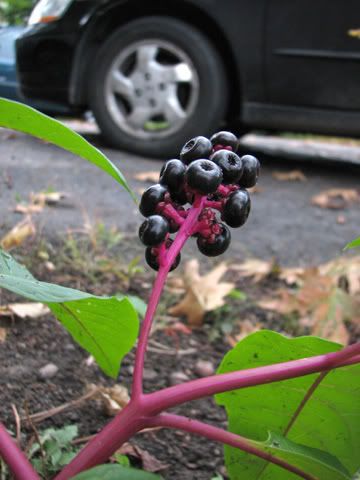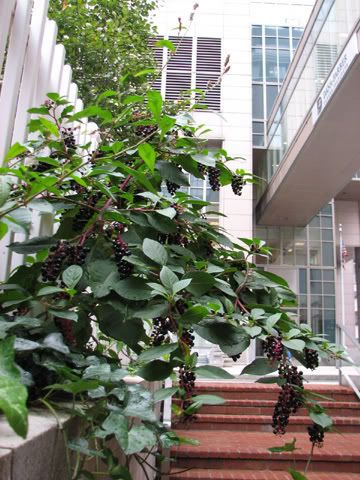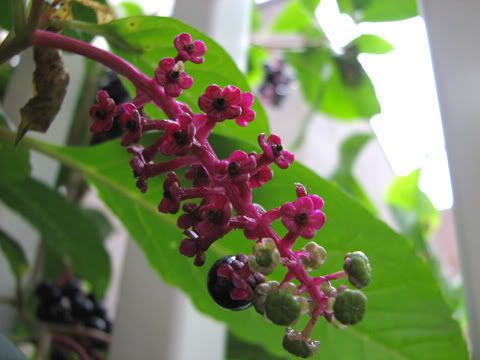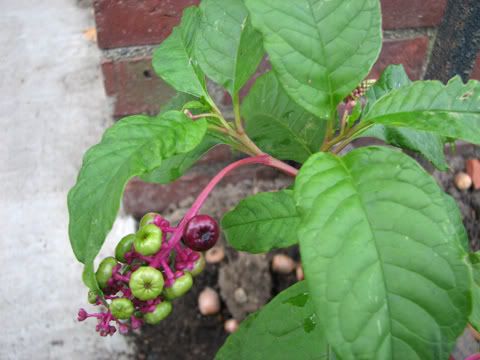365 urban species. #270: Poke

Photos by cottonmanifesto. Location: Fenwood road, Boston.
Urban species #270: Poke Phytolacca americana
This tall and robust native plant has a long history in America as an edible green, and as a dangerously toxic weed. When it's a sprout, six inches tall or smaller, poke can be picked and cooked (prudent guides recommend boiling twice, discarding the water). When the plant is grown, authorities seem to be agree, that from root to fruit, it's poisonous. That includes the leaves, traditionally eaten in poke salad, (which has been celebrated in song). Unripe berries and roots seem to be the most toxic parts of the plant.
Poke, or "pokeweed" as it is often called, is a perennial plant with thick magenta stems and broad green leaves. In parts of the city left unmowed--along hedges or in vacant lots--it grows up to five or six feet tall. In rich moist soil, in can soar to eight or even ten feet. The entire plant dies down in winter, but regrows from its root in summer. The fruits are conspicuous bunches of plump juicy berries. The juice from this fruit stains the fingers (but washes off with water) and can be used to make a non-permanent ink. "Inkberry" is another common name for this plant. The berries are a favorite food of fruit eating birds, such as mockingbirds, robins, and waxwings. Poke is utterly dependent on these predations: its seeds are unable to germinate without first passing through a bird's digestive system.

Location: Dana Farber Cancer Institute. Poke was historically used by Native Americans to treat cancer and other ailments. Recent studies suggest that the plant contains compounds with anticarcinogenic properties.

Flowers with five rounded petals give way to green fruits that ripen to purple.

